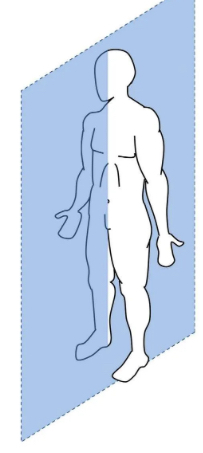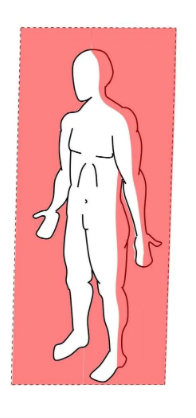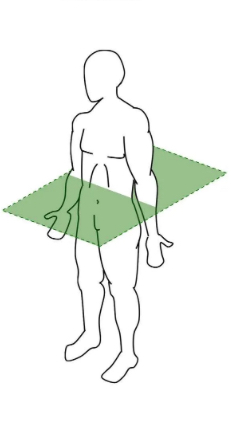Honors Anatomy Test #1 Full Set
1/118
There's no tags or description
Looks like no tags are added yet.
Name | Mastery | Learn | Test | Matching | Spaced |
|---|
No study sessions yet.
119 Terms
Endo-
in; within
Epi-
above; upon; on
Hyper-
above; excessive
Hypo-
deficient; below; under; less than
Sub-
under; below
Cardi/o
heart
derm/o
skin
hist/o
tissue
my/o
muscle
oss/o
bone
-cyte
cell
-ology
study of
-gen
substance that produces
-osis
condition, usually abnormal
-pathy
disease; emotion
Abdominal
abdomen
Acromial
point of shoulder (located in upper limb)
Antebrachial
forearm (located in upper limb)
Antecubital
front of elbow (located in upper limb)
Axillary
armpit (located in chest)
Brachial
arm (located in upper limb)
Buccal
cheek (located on the cephalic/ aka head)
Calcaneal
heel (located on lower limb)
Carpal
wrist (located in upper limb)
Cephalic
the head
Cervical
neck
Coxal
hip (located in lower limb)
Crural
leg (located in lower limb)
Digital
toes and fingers
Femoral
thigh (located in lower limb)
Fibular (aka peroneal)
side of leg (located in lower limb)
Frontal
forehead (located on cephalic/ aka head)
Gluteal
buttock (located on dorsal/aka back)
Inguinal
groin (located in abdomen)
Lumbar
lion (located on dorsal/aka back)
Mammary
breast (located on the thoracic/aka chest)
Mental
chin (located on cephalic/ aka head)
Nasal
nose (located on cephalic/ aka head)
Occipital
back of the head or base of the skull
Olecranal
back of elbow (located on the upper limb)
Oral
mouth (located on the cephalic/ aka head)
Orbital
eye (located on the cephalic/ aka head)
Otic
ear (located on the cephalic/ aka head)p
Palmar
palm (located on the upper limb)
Patellar
anterior knee (located on the lower limb)
Pelvic
pelvis
Plantar
sole (located in the lower limb)
Popliteal
back of knee (located on lower limb)
Pubic
penis
Sacral
between hips (located on dorsal aka back)
Scapular
shoulder blade (located on dorsal aka back)
Sternal
breast bone (located on thoracic aka chest)
Sural
calf(located on lower limb)
Tarsal
ankle (located in lower limb)
Umbilical
navel aka belly button (located on abdemen)
Vertebra
spinal column (located in dorsal aka back)
what is the purpose of the circulatory system?
main function is to move blood, oxygen, nutrients, carbon dioxide and hormones around the body
what’s organs are found within the circulatory system?
heart, blood, arteries, veins, capillaries
what is the purpose of the digestive system?
a series of connected organs that allow the body to break down and absorb food, and remove waste
what’s organs are found within the digestive system?
mouth, esophagus, stomach, small and large intestines, anus, rectum
what is the purpose of the endocrine system?
a collection of glands that secrete hormones into the blood to regulate bodily functions, such as growth and metabolism
what’s organs are found within the endocrine system?
pituitary gland, pineal gland, thyroid gland, pancreas, adrenal glands, ovaries/testes
what is the purpose of the excretory system?
to produce and eliminate a waste product called urea, which is produced when certain foods are broken down
what’s organs are found within the excretory system?
kidney, urinary bladder, urethra
what is the purpose of the immune system?
the body’s defense system against pathogens, including bacteria, viruses, protoza and others
what’s organs are found within the immune system?
white blood cells, thymus, spleen, bone marrow, lymph notes
what is the purpose of the integumentary system?
to acts as a protective barrier, retain body fluids, eliminate waste products, and regulate body temperature
what’s organs are found within the integumentary system?
skin, hair, nails, glands
what is the purpose of the lymphatic system?
to make and move lymph, a clear fluid which helps against infection
what’s organs are found within the lymphatic system?
lymph nodes, lymph duct, lymph vessels
what is the purpose of the muscular system?
contains over 650 muscles that aid in movement, blood flow and other bodily functions
what’s organs are found within the muscular system?
skeletal muscles, smooth muscles, cardiac muscle (heart)
what is the purpose of the nervous system?
-sends signals through the body
-controls both voluntary actions (eg conscious movement) and involuntary actions (eg breathing)
what’s organs are found within the nervous system?
brain, spinal cord, nerves
what is the purpose of the skeletal system?
-provides shape, support and protection to the body
-allows for movement
-produces red blood cells
what’s organs are found within the skeletal system?
bones, tendons, ligaments, cartilage bone marrow
what is the purpose of the reproductive system?
allows for sexual reproduction
-males, produce sperm
-females produce eggs
what’s organs are found within the reproductive system?
-males; testes, penis
-women; vagina, ovaries, uterus
what is the purpose of the respiratory system?
allows humans to take in vital O2 from air and expel CO2 and water vapor
what’s organs are found within the respiratory system?
lungs, diaphragm, trachea
Anatomy
The study of the structure of the body
Physiology
Study of how body structures function
Anatomical position
A position in which a person is standing upright, facing forward, with arms at the sides, palms facing forward, and feet flat on the ground (left and right of body refer to the person themselves, not the person looking at the body)
What is the anatomical position important
This is important because it creates a consistent system between doctors of explaining the condition of a person and allowed doctors to more easily discover what is wrong with a person

Sagittal (medial) plane

Frontal plane

Transverse plane
Cell
Basic structural and functional unit of all living things
Tissue
2 or more cells working together to preform a task
Organ
2 or more tissues working together to preform a task
Organ systems
2 or more different organs working together to preform a task
Organism
The created living thing
Upper right quadrant
Contains right lobe of the liver, gallbladder, parts of the pancreas, small and large intestines
Upper left quadrant
Contains left lobe of liver, spleen, stomach, and parts of pancreas, small and large intestines
Lower right quadrant
Part of small and large intestine, right of bladder, and right of ureter
Female; right, ovary, right fallopian, tube, and right side of uterus
Males; right side of reproductive organs
Lower left quadrant
Part of small and large intestine, left of bladder, and left of ureter
Females; left ovary, left fallopian tube and left side of uterus
Males; left side of reproductive organs
cranial cavity
contains brain
dorsal body cavity
contains cranial vertebral, thoracic and abdominal cavities
ventral body cavity
contains thoracic and abdominopelvic cavities
abdominopelvic cavity
contains abdominal and pelvic cavities